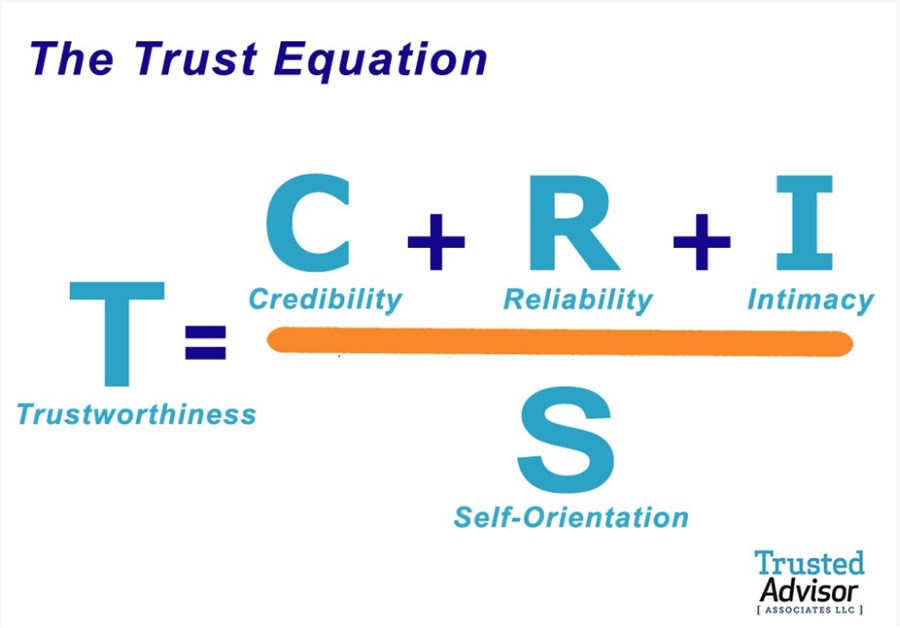Charles H. Green introduced the Trust Equation to explain the components contributing to building and maintaining trust in relationships.i The equation is expressed as follows:
Trust = (Credibility + Reliability + Intimacy) / Self-orientation
Let’s break down each component:
Credibility refers to the perception of a person’s expertise, competence and credibility in their field or area of work. It encompasses their knowledge, skills and track record of delivering on promises. Credibility is built through demonstrating expertise, being transparent about capabilities and limitations, and consistently delivering high-quality results.
Reliability is about being consistent, dependable and trustworthy in fulfilling commitments and obligations. It involves keeping promises, meeting deadlines and demonstrating a track record of reliability over time. Reliability builds trust by showing that a person can be counted on to follow through and deliver as promised.
Intimacy is the level of emotional connection, openness and vulnerability in a relationship. It involves creating a safe and supportive environment where individuals can freely share thoughts, feelings and concerns. Intimacy builds trust by fostering empathy, understanding and a sense of mutual care and respect.
Self-orientation describes the degree to which a person focuses on their own interests rather than the interests of others. It reflects whether an individual is primarily self-centred or genuinely interested in the well-being and success of others. A low self-orientation, where one prioritises the needs of others, fosters trust, while a high self-orientation can undermine trust.
The Trust Equation is useful as the focus on credibility, reliability and intimacy builds trust between the coach and the coachee. We are reminded that a high level of self-orientation acts as a trust detractor. Individuals and organisations can cultivate and maintain trust in their relationships by emphasising and enhancing these trust-building components.
TRUST to build trust
Remember that trust is built in micro-actions and that creating and sustaining psychological safety is essential. TRUST is a simple mnemonic representing five things you can easily recall to build and maintain trust in your team and a coaching environment.
| Time | Invest time in people.
Make it quality uninterrupted time. Look for quality over quantity (shorter, regular one-on-ones are more effective than infrequent longer sessions). |
| Rapport | Inquire and care about the well-being of the person.
Prioritise getting to know each other. Recognise and celebrate success. |
| Understanding | Listen and respond with empathy.
Find out about their challenges. Help them to determine their opportunities. |
| Sense-making | Be curious about the context and environment they are in.
Avoid judgments by engaging all your senses to understand their situation, including your intuition. Ask them more questions rather than assuming. |
| Tactical | Put the effort in, in understanding where they may be at.
Share views lightly – enable them to get there in their own time. Ask them about what they need from you. |

